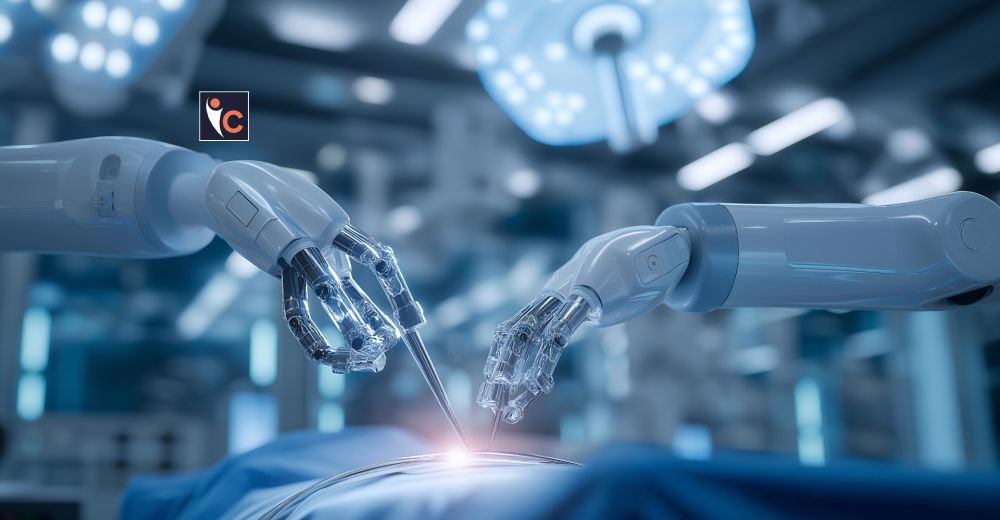Future of Medicine
Advanced robotic surgery facilities represent a transformative leap for modern medicine, marking the next frontier in healthcare advancement. From ultra-precise instruments to advanced digital systems, a quiet revolution is taking place in operating rooms.
This article explains how advanced robotic surgery facilities are changing healthcare by making surgeries safer, faster, and more precise through new technology and innovation.
The Rapid Rise of Robotic Surgery
Robotic-assisted surgery, once considered experimental, has become a trusted part of modern medical practice. Surgeons in fields such as urology, gynecology, orthopedics, and gastrointestinal surgery now rely on robotic systems to perform complex, minimally invasive operations with outstanding precision. These tools allow smaller incisions, fewer complications, and better outcomes for patients.
It is estimated that the year 2025 will be the biggest year of robotic procedures since hospitals are still heavily investing in this technology. Robotic systems enhance accuracy, speed recovery, and make the operation in the hospital more efficient. The era of robotics in surgery has arrived in full.
Technology Transforming Surgery
-
Miniaturization and Micro-Robotics:
Smaller modular robots have been developed by engineers and can be easily fitted into the operating rooms of normal size. These miniature systems achieve tremendous control in the delicate procedures like those of prostate, colon and laparoscopic surgeries. Their microscopic tools minimize traumatic experiences of the tissues, scarring, and ensure patients heal quickly.
-
Data-Enhanced Surgical Precision:
The present-day robotic systems generate three-dimensional views of the anatomy of a patient in high resolution and with digital images. These visual maps allow surgeons to direct instruments as precisely as millimeters to perform cleaner and safer procedures. Surgical procedures can be predicted better, and the possibility of errors is minimized through the possibility to observe the structures in real-time and monitor them.
-
Telemedicine and Remote Surgery:
Remote surgical systems now allow expert surgeons to guide or even perform operations from different locations. With secure, high-speed networks, hospitals can connect specialists to rural or underserved regions, giving patients access to world-class care no matter where they live.
Proven Clinical and Economic Benefits
Robotic surgery has evident medical and economic benefits to the patient and hospital.
-
Greater Precision and Safety:
Robotic arms move with a wider range and finer accuracy than the human hand. This precision helps avoid accidental tissue damage, lowers infection risks, and improves overall surgical quality. Studies show a 25-40 percent boost in precision compared to traditional methods.
-
Faster Recovery and Shorter Hospital Stays:
Because robotic procedures are less invasive, patients experience less pain, reduced blood loss, and smaller scars. Most recover more quickly and leave the hospital up to four days sooner, which helps hospitals treat more patients and lower costs.
-
Better Efficiency and Cost Savings:
Hospitals performing many robotic procedures report up to a 20 percent drop in operating costs. These savings are achieved through fewer complications, better scheduling, and better use of resources. Patient turnover is also enhanced by streamlined workflow and accelerated recovery time.
Training, Ethics, and Workforce Development
The rise of robotics is also reshaping how surgeons train and work. Medical institutions now use high-fidelity simulators, virtual training systems, and digital performance tools to help doctors master new techniques. These systems let surgeons practice complex procedures safely and gain confidence before entering the operating room.
Robotics also eases the physical demands of surgery. Reducing fatigue and repetitive strain, it helps surgeons maintain focus and precision during long operations. This improvement supports better performance and reduces workforce burnout.
At the same time, hospitals and regulators are working to address ethical and legal questions. They are developing clear rules for accountability, equipment management, and patient consent to ensure safety and transparency as technology becomes more involved in the surgical process.
Challenges and the Path Forward
While robotic surgery continues to grow, challenges remain. High purchase and maintenance costs, limited insurance coverage, and uneven training programs still limit access. However, new partnerships between hospitals, manufacturers, and universities are solving these issues through shared-use models, affordable system designs, and standardized education.
With such barriers being lowered, the advanced robotic surgery facilities will become the new frontier of surgery. Their smooth systems, their accurate tools, and their international scope will transform the way hospitals operate, the way patients recover and the way physicians treat them.
Conclusion
The evolution of surgery is entering its most exciting phase. Robotics does not replace the surgeon; it enhances them to achieve new standards of accuracy, security, and empathy. Through human-technological innovation, the advanced robotic surgery facilities are designing a new paradigm of care founded on expertise, rapidity, and dependability.
With innovation, surgery will be less invasive, recovery will be faster and quality care will be accessible to more people across the world. The operating room of the future is already here, guided by human hands, enhanced by technology, and defined by one shared goal: better outcomes for every patient.





